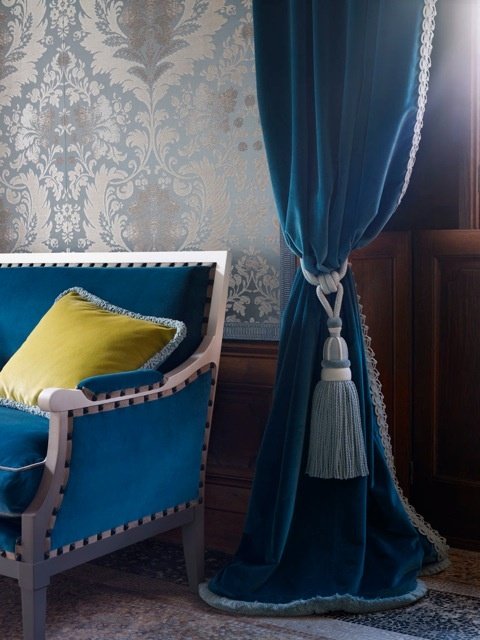Modrý samet
Co Vás napadne, když slyšíte slovo samet? Mojí asociací, již zřejmě navěky zůstane tklivá píseň z filmu Davida Lynche „Blue velvet“ v podání neodolatelné Isabelly Rossellini:
“She wore blue velvet
Bluer than velvet was the night
Softer than satin was the light
From the stars….”
A přesně takový samet je, jednoduše výjimečný a neodolatelný.
Jedná se o vlasovou tkaninu vyráběnou po staletí, kde špičky hustých vlasů přesahují plochu základní vazby o 1 až 2 mm. První cech tkalců sametu byl založen již v roce 1247 v Itálii. Původně se samet vyráběl pouze z hedvábí a byl považován za ryze luxusní zboží, které si mohli dovolit jen velmi bohatí zákazníci. Postupem času se začal v 19. století samet vyrábět z bavlny a ve druhé polovině 20. století se začal vyrábět i z umělých vláken.
Samet může být hladký, popřípadě zušlechťovaný do plastických vzorů díky vypalování (devoré) anebo ražení (gaufrování). Jaká vlastnost ale sametu vždy zůstává, je jeho krásná splývavost, hebkost na omak a pocitová teplost tkaniny. Samet v interiéru zútulňuje a zpomaluje energii. Rádi jej využíváme v interiéru jednak jako potahovou látku, zároveň je to velmi krásný a luxusní materiál na závěsy a dekorační polštáře. Když jej kombinujeme s prýmky, třásněmi či paspulkami, vždy se jedná o neodolatelný skvost.



